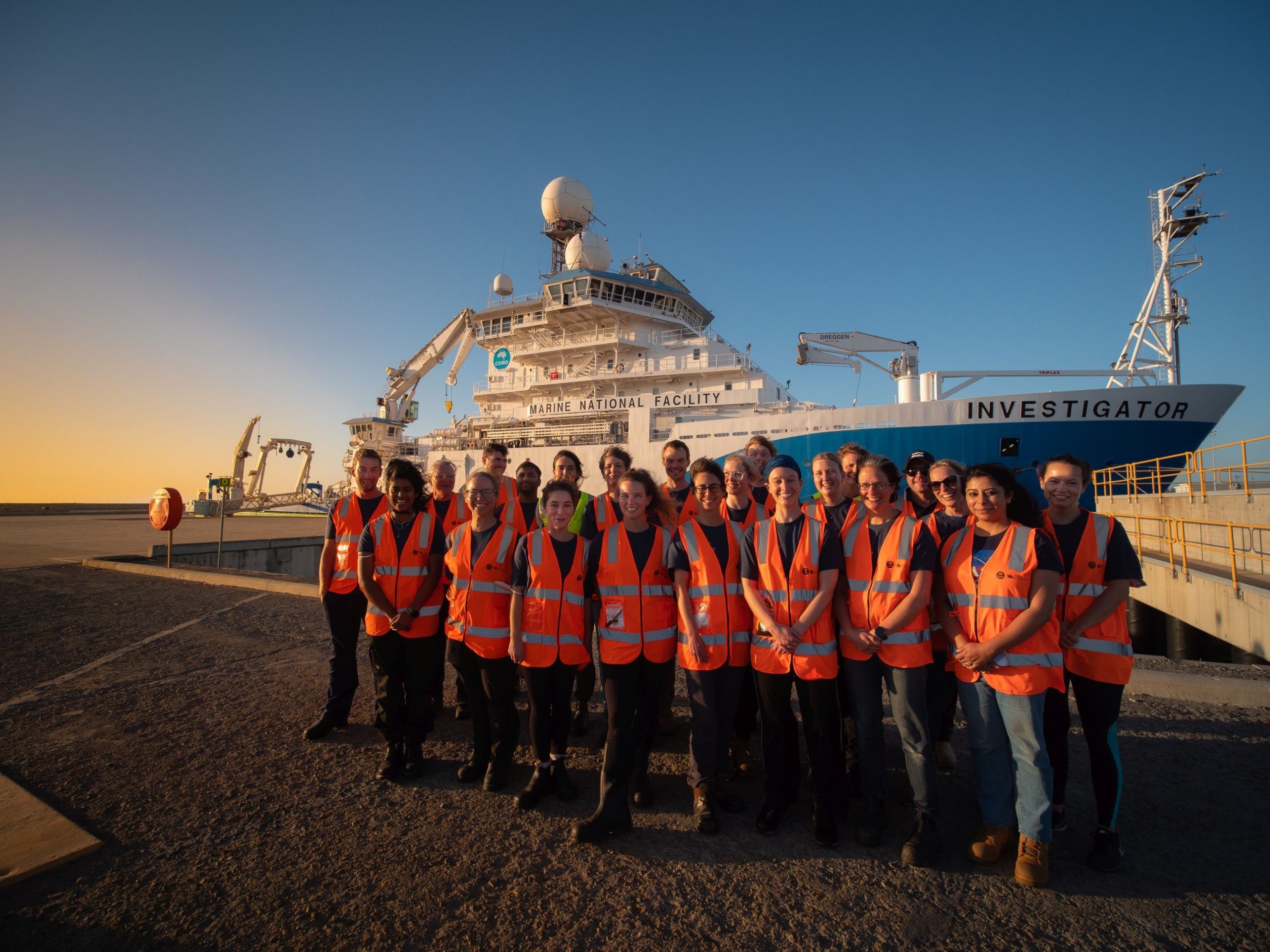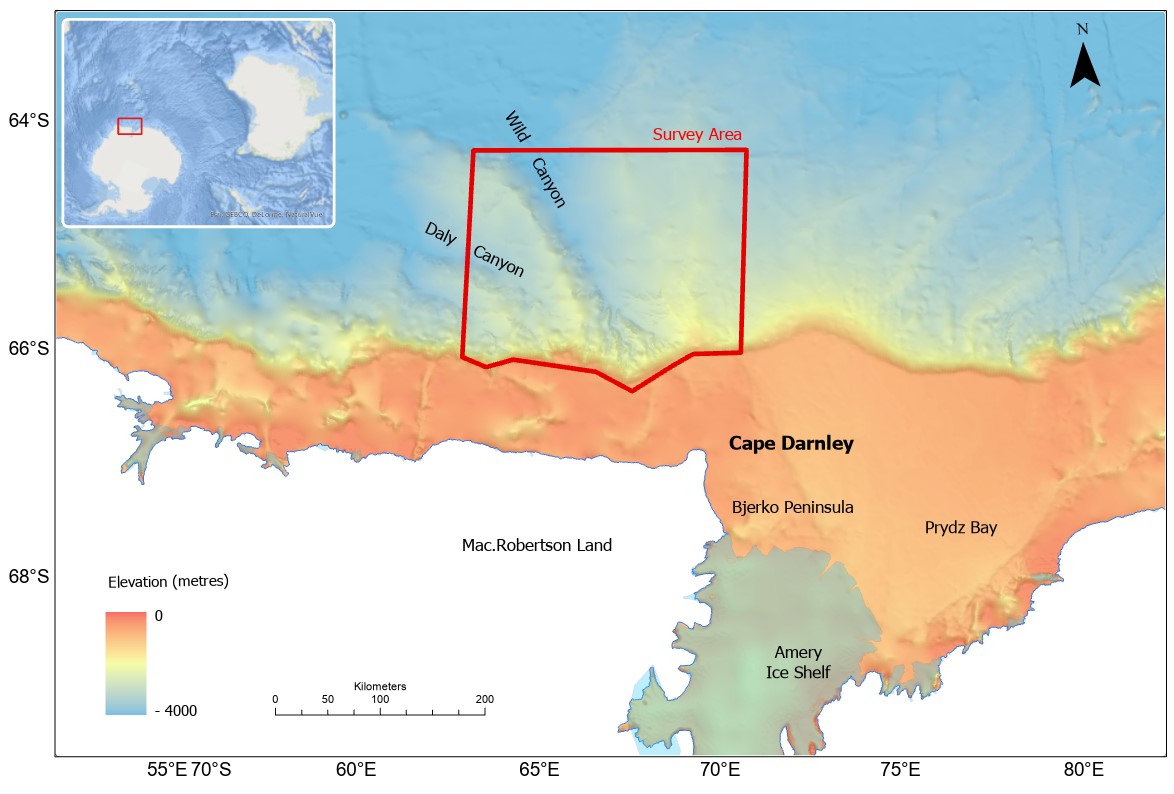Plan A to Z
By Dr Alix Post

The team on board CSIRO’s RV Investigator. Photo credit: Aero Leplastrier.
Just over a month ago, our team set out on CSIRO’s research vessel (RV) Investigator with great anticipation of the planned science and the discoveries that we might make, after months (and years) of detailed planning. However, as sometimes happens in science, the lessons that we bring home are not the ones that we had set out to learn.
Marine science is often full of surprises, and voyages never go exactly to plan. We joked before hand that we would need Plans A through Z to deal with the challenges of weather, equipment failures, sea ice and more, and even then we ran the risk of running out of letters! As things turned out, our plans were even more dynamic that we had ever anticipated. A true test of our leadership, the team’s resilience and adaptability to a very dynamic situation.
As you would know from our previous blogs, within just 5 days of arriving in our survey area and beginning our science program, one of the voyage participants became seriously ill and needed more medical assistance than what could be provided on board. With the advice of our excellent medical team on the vessel and the exhaustion of all other possible solutions, the decision was made to return the vessel to the mainland and seek the medical assistance required.
This was a heartbreaking decision to deliver to our team, but most of the heartbreak that we felt was for our patient. We are thankful that they are now receiving medical care and on the road to recovery.
As we made our way back across the Southern Ocean and towards the southwest Australian coast, we received approval from CSIRO to undertake some opportunistic science following the safe delivery of our patient ashore. We started planning a series of deployments within the submarine canyons offshore from Albany, along a stretch of coastline that is little explored. We came up with a number of questions that we wanted to answer, including:
- What are the characteristics of the seafloor ecosystems in the shallower parts of the canyons?
- What are the properties of the water masses in this region, and have they changed since surveys in the 1990s?
- What can the sediments tell us about past changes in water masses and the changing circulation in this ocean basin and does it link to changes in Antarctica?
We once again made some careful, rapid, plans, which we jokingly referred to as Plan “Z”. However, on the morning that we were due to start this short piece of science, we discovered that there were some fish moorings over the head of our target canyon! Once again we had to replan our deployments just a few hours before operations were due to begin. Now we were onto Plan Z.2!
Fortunately, we were able to transfer our plans to the next canyon over and get stuck into some science. We did a rapid succession of seafloor camera transects, seeing beautiful gardens of sponges, bryozoans, soft corals and fish communities associated with rugged ridges, interspersed by sandy areas with a sparser community of animals. We took the opportunity to collect some individuals for genetic analysis to get a better understanding of the diversity of this little known ecosystem.
We also collected water samples throughout the canyon and to a depth of >4500 m, adding to oceanographic transects to the east and west that have been collected since 1994. A final sediment core was collected at 4000m, providing a white carbonate-rich sediment record, quite a contrast to the green and greys of the diatom-rich sediments off Antarctica.
We are now on our way home and looking forward to being back with family and friends. We don’t have all of the science that we came for, but we have discovered more about ourselves, and we are proud of the team who have supported each other and the camaraderie that comes in the midst of adversity. We return with new friendships, new collaborations, and newly trained up marine scientists. We also have some tantalising glimpses of bottom water processes and its imprint on the seafloor, and sediment cores that we hope will help us to untangle past changes in Antarctica’s climate and oceans.
The voyage is supported by the Australian Centre for Excellence in Antarctic Science and by a grant of sea time on RV Investigator from the Marine National Facility, which is operated by CSIRO, Australia’s national science agency, on behalf of the nation.


